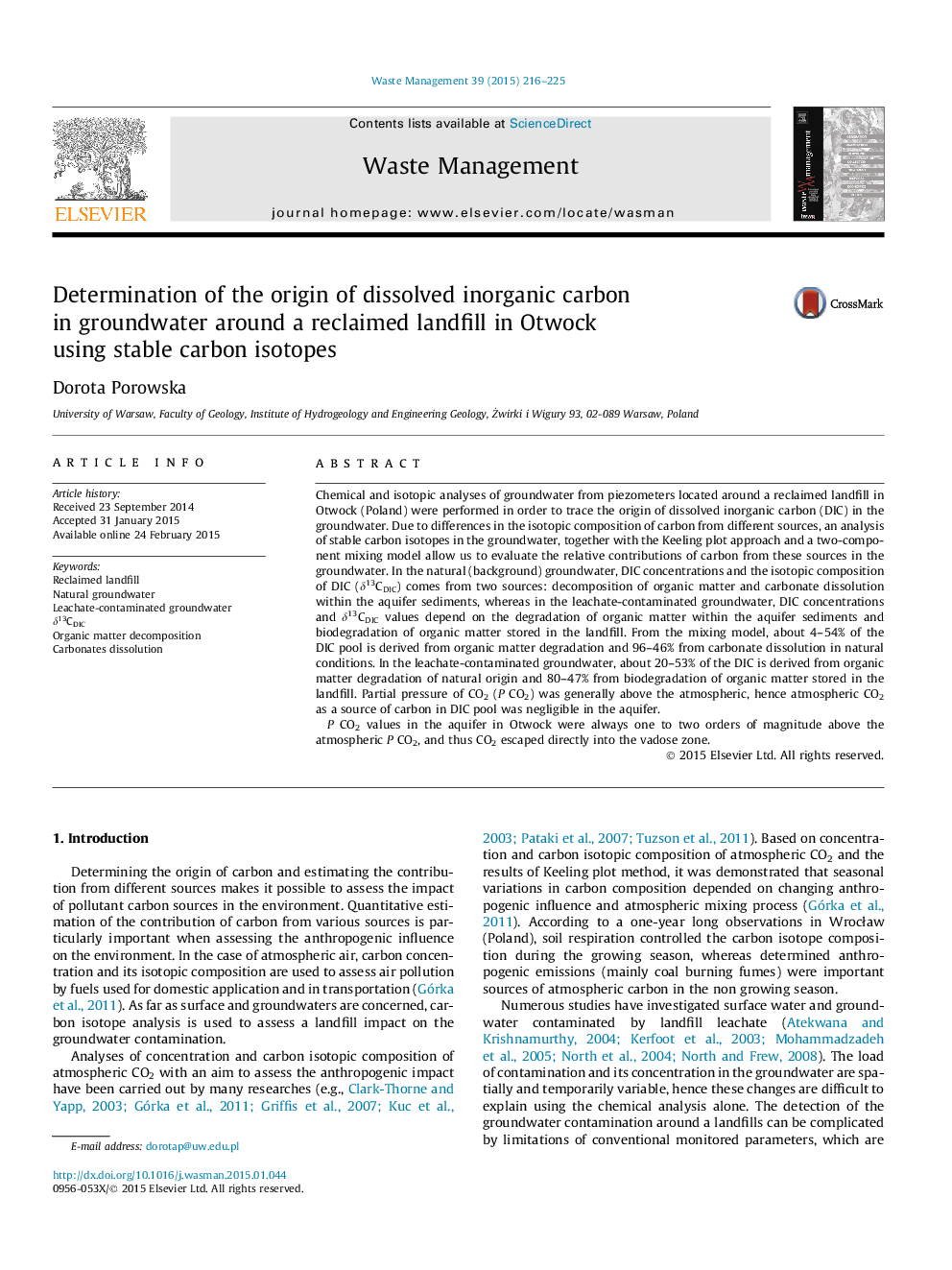| Article ID | Journal | Published Year | Pages | File Type |
|---|---|---|---|---|
| 6354702 | Waste Management | 2015 | 10 Pages |
â¢Research showed the origin of DIC in the groundwater around a reclaimed landfill.â¢Carbon isotope was used to evaluate the contributions of carbon from different sources.â¢The leachate-contaminated water was isotopically distinct from the natural groundwater.â¢DIC in the natural groundwater comes from organic matter and dissolution of carbonates.â¢In the contaminated water, DIC comes from organic matter in the aquifer and landfill.
Chemical and isotopic analyses of groundwater from piezometers located around a reclaimed landfill in Otwock (Poland) were performed in order to trace the origin of dissolved inorganic carbon (DIC) in the groundwater. Due to differences in the isotopic composition of carbon from different sources, an analysis of stable carbon isotopes in the groundwater, together with the Keeling plot approach and a two-component mixing model allow us to evaluate the relative contributions of carbon from these sources in the groundwater. In the natural (background) groundwater, DIC concentrations and the isotopic composition of DIC (δ13CDIC) comes from two sources: decomposition of organic matter and carbonate dissolution within the aquifer sediments, whereas in the leachate-contaminated groundwater, DIC concentrations and δ13CDIC values depend on the degradation of organic matter within the aquifer sediments and biodegradation of organic matter stored in the landfill. From the mixing model, about 4-54% of the DIC pool is derived from organic matter degradation and 96-46% from carbonate dissolution in natural conditions. In the leachate-contaminated groundwater, about 20-53% of the DIC is derived from organic matter degradation of natural origin and 80-47% from biodegradation of organic matter stored in the landfill. Partial pressure of CO2 (P CO2) was generally above the atmospheric, hence atmospheric CO2 as a source of carbon in DIC pool was negligible in the aquifer.P CO2 values in the aquifer in Otwock were always one to two orders of magnitude above the atmospheric P CO2, and thus CO2 escaped directly into the vadose zone.
Graphical abstractDownload full-size image
